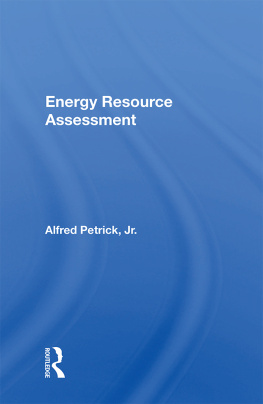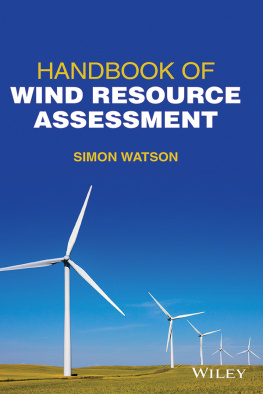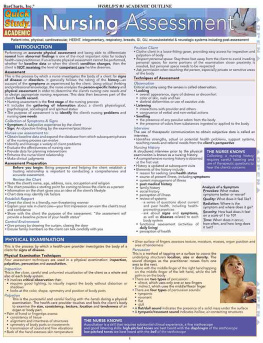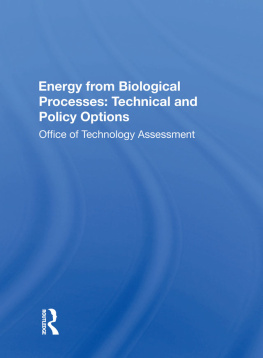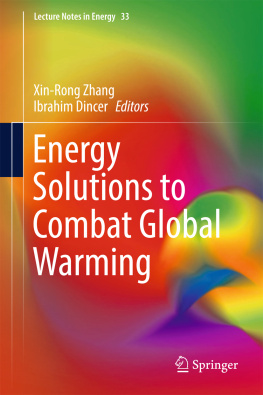Energy Resource Assessment
Energy Management Training Program Monograph Series
Peter M. Meier, Series Editor
Energy Resource Assessment, Alfred Petrick, Jr.
Energy Pricing and Demand Management, Mohan Monasinghe
Energy Planning in Developing Countries: An Introduction to Analytical Methods, Peter M. Meier
Industrial Energy Management, Barry G. Tunnah
Rural Energy Planning in Developing Countries, Hanir Chatterjee
Renewable Energy for Industrialization and Development, David Jhirad
About the Book and Author
The basic concepts utilized in analysis of non-renewable energy resources are presented in this study. Dr. Petrick explains the process of exploration in terms of the present value of expected discoveries, efficiency in exploration, and the budgeting process, stressing objectives and strategies designed to help avoid "gambler's ruin" and aid in the efficient spending of exploration dollars. The case of a wildcat oil-gas prospect in Colorado illustrates the fundamentals of petroleum evaluation, including calculation of reserves and the expected value of discovery. The history of the Ekofisk discovery in the North Sea serves as an example of the stages of large-scale petroleum development, including financing and cost evaluation. Discussions and a case history of the Cerrejon project in Colombia are also given. Dr. Petrick closes with a chapter on cost estimation, clarifying the concepts used in order-of-magnitude cost estimation of minerals and fuels projects.
Dr. Alfred Petrick, Jr., is a senior faculty member of the Energy Management Training Program at the State University of New York, Stony Brook. He is director of Petrick Associates, a consulting firm in mineral and energy economics, and a professor at the Colorado School of Mines.
Energy Resource Assessment
Alfred Petrick, Jr.
Director, Petrick Associates, Evergreen, Colorado and Senior Faculty Member, Energy Management Training Program, Institute for Technology Policy in Development, State University of New York, Stony Brook
First published 1986 by Westview Press, Inc.
Published 2018 by Routledge
52 Vanderbilt Avenue, New York, NY 10017
2 Park Square, Milton Park, Abingdon, Oxon OX14 4RN
Routledge is an imprint of the Taylor & Francis Group, an informa business
Copyright 1986 Taylor & Francis
All rights reserved. No part of this book may be reprinted or reproduced or utilised in any form or by any electronic, mechanical, or other means, now known or hereafter invented, including photocopying and recording, or in any information storage or retrieval system, without permission in writing from the publishers.
Notice:
Product or corporate names may be trademarks or registered trademarks, and are used only for identification and explanation without intent to infringe.
Library of Congress Catalog Card Number: 86-50006
ISBN 13: 978-0-367-01651-7 (hbk)
About the Series
The Institute for Technology Policy in Development, founded in 1976, is an organized research unit of the State University of New York at Stony Brook. Its general mandate is to help develop the knowledge base, methodologies, and skills needed by policy makers throughout the world to formulate technology policies and to manage the transfer of new technologies. The mechanisms to be used by the Institute are conferences and workshops, research and policy issue analyses, and special training courses. These activities are designed to provide governments, public agencies and private organizations with an objective, independent, policy oriented source of knowledge, training, and technical assistance to help them deal with the problems and opportunities presented by changing or newly developing technologies. The specific technologies in which the Institute is concentrating its efforts at present are energy, computers, and bio-engineering.
The monographs in this series are based on the curriculum developed for the Institute's Energy Management Training Program (EMTP). The program has attained an international reputation for excellence in training middle and upper level planners and managers for dealing with the difficult problems of energy and development. Thus far, the EMTP has trained over 300 policy makers and upper level managers from 63 developing countries, many of whom now occupy positions of leadership as energy planners in their countries.
The material in the monographs has been perfected over the last eight years to reflect the current trends in energy management in the developing countries. There are several reasons for bringing these monographs before a wider audience. As a whole, the series reflects a unique, comprehensive treatment of all aspects of energy planning and management in developing countries and is, therefore, suitable as instructional material at the graduate and post-graduate levels, as a reference collection, and as a comprehensive guide to the field. The series also reflects in its case material the diversity of the participants in the EMTP and the efforts and experience in the field over the past decade under a very wide set of resources and financial and economic conditions.
Dr. Robert Nathans, Director
Institute for Technology Policy in Development
State University of New York-Stony Brook
1
Introduction
This monograph studies the relationships between the technical, economic, and financial aspects of petroleum, natural gas, coal, and uranium supply from primary sources. The analysis presented applies to any country with energy resources, but is addressed particularly to energy planners in the developing countries. Management of an energy program requires expertise and confidence in assessing the economic feasibility of development of internal as well as external energy sources. Such assessment is interdisciplinary in nature, requiring expertise in geology, geophysics, exploration management, resource engineering, and marketing.
The first step in resource project evaluation is to assess the technical aspects of development of a new source of energy. The evaluator must develop a physical description of the exploration, extraction and processing necessary for the energy source. If the source is coal or uranium, a conceptual mining and processing plan is prepared. If the source is oil or gas, the physical characteristics of the potential geological formation must be assessed. The second step in the analysis is to convert the physical description into an economic model measured by a pattern of investment, cost, and revenue cash flows.
The third step in the analysis is to evaluate the cash flow model using criteria accepted by all parties involved in the project. Criteria such as net present value and rate of return are accepted measures of foreign investor incentive. Equally important are measures of employment, foreign exchange generation, technology transfer, and other host country benefits. Development of these economic models is important whether the host country plans for state development of the resources or whether it plans to negotiate joint venture agreements with foreign investors. This monograph concentrates on these important aspects of energy management.
Scope
is a summary of cost estimation techniques that provide a basis for converting geological and engineering data to necessary investment and operating cash flows of a project.


